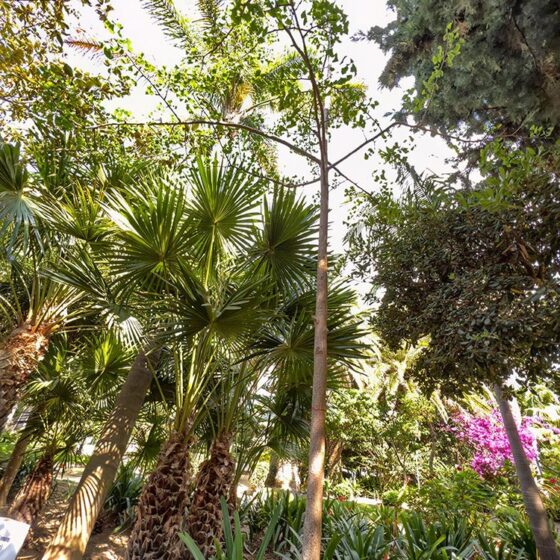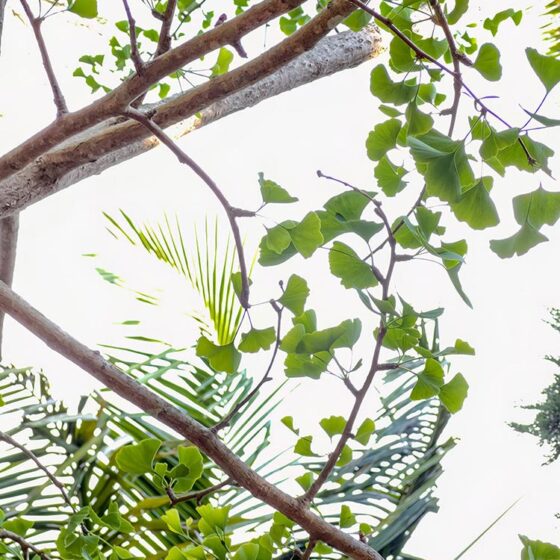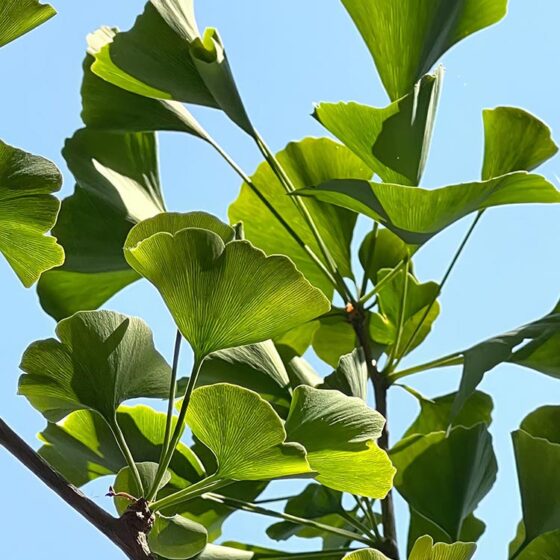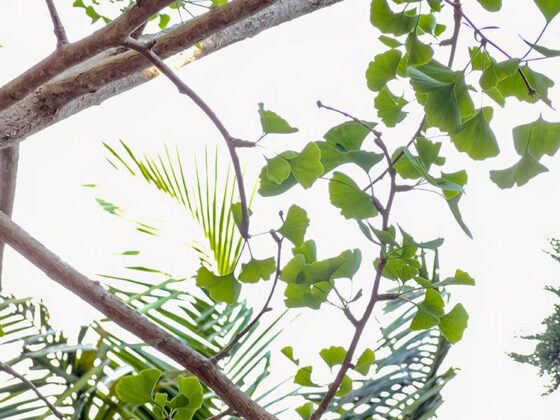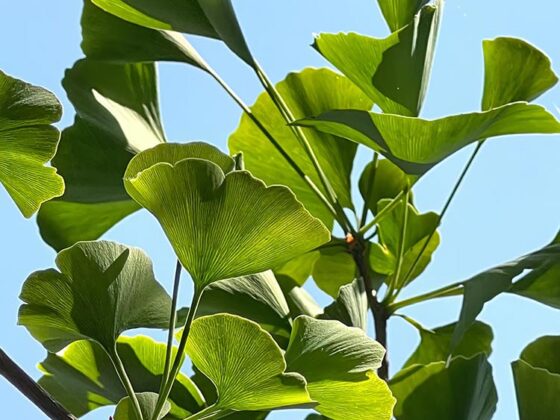Maidenhair Tree
Gingko biloba
The original name of this tree in Chinese was “yín xìng”. The writing of this word was introduced to Japanese in the seventeenth century.
Originally from China, it can flourish in different climates of the world.
Deciduous tree of medium size, which can reach 35 m in height. It has a narrow, somewhat pyramidal crown, and is formed by one or several trunks. Its branches are generally straight and inclined, thick and stiff. It is a very long-lived species, some specimens more than 2,500 years old have been located.
The leaves are of a light green colour and between 5-15 cm, which are flat and fan-shaped. This tree is a gymnosperm, which means that its seeds do not have a protective shell.
The modern ginkgo is a living fossil, with fossils clearly related to it dating from the Permian Age, 270 million years ago.
For centuries it has been used for its therapeutic actions, especially for traditional Chinese medicine. From its leaves an extract is obtained that has flavonoids that when ingested, increases the blood circulation. Studies have been conducted on its use as an adjuvant in the treatment of Alzheimer’s disease, senile dementia and Parkinson’s.
After the atomic bomb of Hiroshima, it was one of the few trees that remained standing in the vicinity of the epicentre, so it is known as a carrier of hope.
In Cadiz, there are specimens of this species in the Maria Auxiliadora street, Marques de la Ensenada, Parque de los Cinco Continentes, Loreto and Plaza de Santa Ana.


